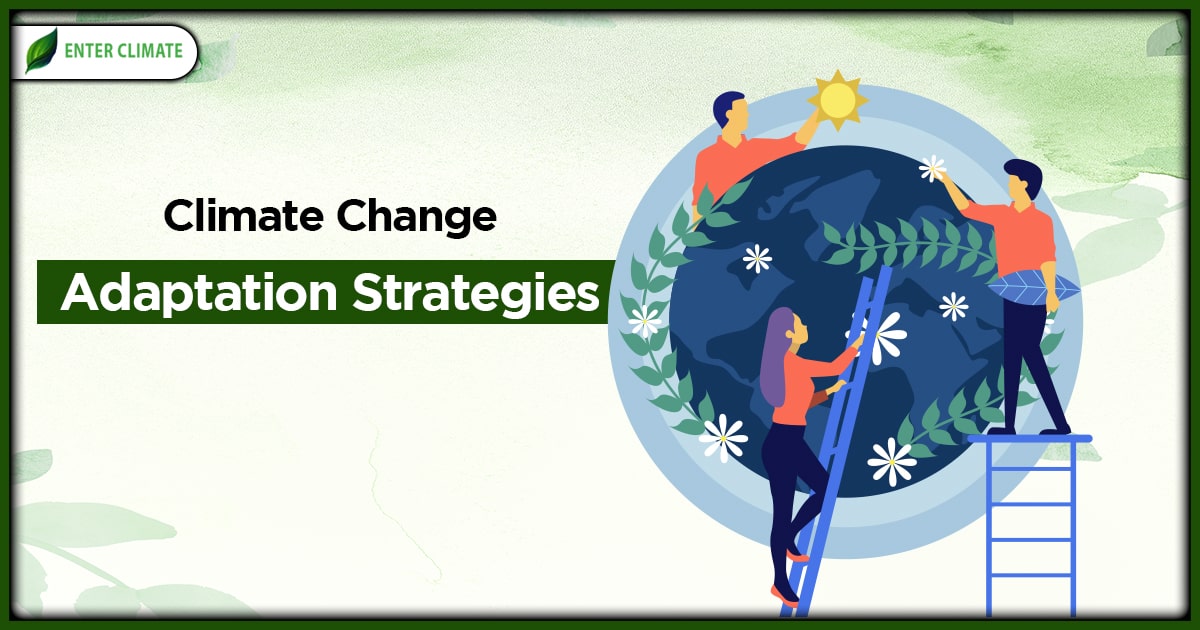Report on Effective Advocacy for Workplace Equality and its Contribution to Sustainable Development Goals
A recent study provides critical insights into how advocacy for workplace equality is perceived, offering actionable strategies for leaders committed to advancing the United Nations Sustainable Development Goals (SDGs). The research highlights how the identity of an advocate influences audience perception and demonstrates a simple method to enhance the perceived authenticity of the message, thereby strengthening efforts to achieve key global targets.
Research Findings on Perceptions of Advocacy
Research conducted by Elizabeth Q. Jiang and Sherry J. Wu at UCLA Anderson, published in the Personality and Social Psychology Bulletin, examined how messages about racial and gender inequality are received based on the speaker’s identity. The study’s findings have significant implications for organizations striving to meet SDG 10 (Reduced Inequalities) and SDG 5 (Gender Equality).
Key Observations
- Speakers from minority groups (e.g., white female, Black male, Black female) advocating against inequality were generally perceived as being motivated by a desire to help others (“other-interest”).
- In contrast, white male managers discussing the same issues were perceived as having higher levels of self-interest and lower levels of other-interest.
- This perception gap presents a challenge for achieving inclusive leadership, a cornerstone of SDG 16 (Peace, Justice and Strong Institutions).
The Impact of Personal Advocacy Statements
The study identified a powerful, low-cost intervention to mitigate this perception bias. The inclusion of a personal advocacy statement was found to significantly improve how an advocate’s motivations were perceived across all groups.
Effective Communication Strategy
When a speaker, particularly a white male, added a personal note to factual statements about inequality, perceptions of their motivation shifted positively. Examples of such statements include:
- “As some of you may know, inequality is an issue near and dear to my heart.”
- “Addressing group-based disparity is one of my personal missions.”
The addition of these statements increased the perception that the speaker was genuinely concerned with the welfare of others. This technique proved beneficial for all speakers, suggesting it is a universal tool for enhancing the authenticity of advocacy against inequality.
Study Methodology and Data
The conclusions are based on three studies involving over 2,200 participants who were asked to rate a messenger’s motivation. Participants read a fictional company newsletter article that included data points on real-world disparities.
Data Presented to Participants
- Racial Disparity in Employment: “According to the Bureau of Labor Statistics, unemployment breakdown by race is as follows: Whites (3.3%) and Blacks (6.1%) (for the year 2019).”
- Gender Disparity in Income: “According to the U.S. Census Bureau, households headed by men have an average yearly income of $88,182, and households headed by women have an average yearly income of $64,470 (for the year 2019).”
Results of the Intervention
When the newsletter article contained only the factual data, white male messengers were rated significantly lower in “other-interest” than all other groups. However, when personal advocacy statements were included, their perceived “other-interest” scores rose significantly, aligning more closely with the scores of minority group messengers. This demonstrates a practical method for dominant group members to effectively signal genuine commitment to equity.
Implications for Achieving Sustainable Development Goals
The research findings provide a clear communication strategy that directly supports the achievement of several SDGs within an organizational context.
SDG 10: Reduced Inequalities
By providing a tool for more effective and credible advocacy, this research helps leaders promote the social and economic inclusion of all, irrespective of gender or race (Target 10.2). It offers a method to ensure that policies aimed at eliminating discrimination are communicated in a way that fosters trust and organizational justice (Target 10.3).
SDG 5: Gender Equality & SDG 8: Decent Work and Economic Growth
The study directly addresses the challenge of advocating for gender equality (SDG 5) and equal pay for work of equal value (Target 8.5 of SDG 8). Leaders equipped with this communication technique can more effectively champion policies that close the gender pay gap and ensure decent work for all, fostering an environment of equity and respect.
SDG 16: Peace, Justice and Strong Institutions
As Jiang and Wu conclude, such interventions are an “important first step in the long march towards organizational justice and equity.” Building just and inclusive institutions (Target 16.6) requires that leaders are perceived as authentic allies. This research provides a practical step for leaders to build that credibility and strengthen their organizations from within.
Analysis of Sustainable Development Goals in the Article
1. Which SDGs are addressed or connected to the issues highlighted in the article?
-
SDG 5: Gender Equality
The article directly addresses gender inequality in the workplace. It highlights discrimination against women in pay, citing specific data from the U.S. Census Bureau showing a significant income gap between households headed by men and women. The core subject is about achieving equity, which is central to SDG 5.
-
SDG 8: Decent Work and Economic Growth
The article focuses on workplace dynamics, including discrimination in hiring, unequal pay, and unemployment rates. These issues are fundamental to the goal of achieving “decent work for all women and men” and “equal pay for work of equal value.” The data on unemployment disparities between racial groups further connects the article’s content to this SDG.
-
SDG 10: Reduced Inequalities
This is a primary theme of the article. It explicitly discusses “workplace racial and gender inequality” and the “long march towards organizational justice and equity.” The research presented analyzes how to effectively advocate against group-based disparities, directly aligning with the goal of reducing inequalities based on race and gender.
2. What specific targets under those SDGs can be identified based on the article’s content?
-
Target 5.1: End all forms of discrimination against all women and girls everywhere.
The article’s opening statement, “Women and minority group members have faced discrimination in hiring and pay,” directly points to the forms of economic discrimination that this target aims to eliminate.
-
Target 8.5: By 2030, achieve full and productive employment and decent work for all women and men… and equal pay for work of equal value.
This target is clearly identified through the two key data points used in the research study mentioned in the article: the disparity in unemployment rates between Black and white individuals and the significant income gap between male-headed and female-headed households. These examples illustrate a failure to achieve equal pay and full employment for all.
-
Target 10.2: By 2030, empower and promote the social, economic and political inclusion of all, irrespective of… sex, race, ethnicity…
The article’s focus on racial and gender inequality in the workplace is a direct reflection of this target. The research explores how to make advocacy for inclusion more effective, which is a key part of promoting social and economic inclusion.
-
Target 10.3: Ensure equal opportunity and reduce inequalities of outcome, including by eliminating discriminatory… policies and practices…
The article discusses how “white men have historically benefited from those biased practices” in hiring and pay. The research on how to best communicate and advocate against these practices is aimed at changing them and thus ensuring more equal opportunity and reducing inequalities of outcome.
3. Are there any indicators mentioned or implied in the article that can be used to measure progress towards the identified targets?
- Unemployment rate by race: The article explicitly provides data that serves as an indicator for targets 8.5 and 10.2. It states, “According to the Bureau of Labor Statistics, unemployment breakdown by race is as follows: Whites (3.3%) and Blacks (6.1%) (for the year 2019).” This data directly measures economic inequality between racial groups.
- Gender income/pay gap: The article provides a clear indicator for targets 5.1 and 8.5 by citing income disparities. It mentions, “According to the U.S. Census Bureau, households headed by men have an average yearly income of $88,182, and households headed by women have an average yearly income of $64,470 (for the year 2019).” This is a direct measure of the economic inequality between genders.
- Perception of discrimination and advocacy: The study itself implies an indicator for Target 10.3. The research measures how participants “perceived a messenger’s motivation for both self-interest and other-interest” when advocating for equality. Tracking these perceptions can serve as a qualitative indicator of progress in changing attitudes and eliminating discriminatory practices.
4. Table of SDGs, Targets, and Indicators
| SDGs | Targets | Indicators Identified in the Article |
|---|---|---|
| SDG 5: Gender Equality | 5.1: End all forms of discrimination against all women and girls everywhere. | Income gap between male-headed ($88,182) and female-headed ($64,470) households. |
| SDG 8: Decent Work and Economic Growth | 8.5: Achieve full and productive employment and decent work for all… and equal pay for work of equal value. | Unemployment rate by race (Whites 3.3%, Blacks 6.1%); Income gap between genders. |
| SDG 10: Reduced Inequalities | 10.2: Empower and promote the social, economic and political inclusion of all, irrespective of sex, race…
10.3: Ensure equal opportunity and reduce inequalities of outcome, including by eliminating discriminatory… practices… |
Disparities in unemployment rates by race; Perceptions of messenger motivation (self-interest vs. other-interest) when advocating against inequality. |
Source: anderson-review.ucla.edu







